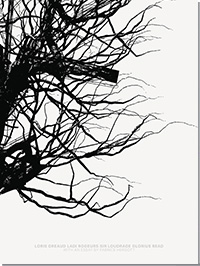Künstlerbücher / Special Editions
Almond, Darren / Blechen, Carl: Landschaften
Brown, Glenn: And Thus We Existed
Butzer, André: Exhibitions Galerie Max Hetzler 2003–2022
Chinese Painting from No Name to Abstraction: Collection Ralf Laier
Choi, Cody: Mr. Hard Mix Master. Noblesse Hybridige
Demester, Jérémy: Fire Walk With Me
Dienst, Rolf-Gunter: Frühe Bilder und Gouachen
Dupuy-Spencer, Celeste: Fire But the Clouds Never Hung So Low Before
Ecker, Bogomir: Man ist nie Alone
Elmgreen and Dragset: After Dark
Förg, Günther: Forty Drawings 1993
Förg, Günther: Werke in der Sammlung Friedrichs
Galerie Max Hetzler: Remember Everything
Galerie Max Hetzler: 1994–2003
Gréaud, Loris: Ladi Rogeurs Sir Loudrage Glorius Read
Grosse, Katharina: Spectrum without Traces
Hatoum, Mona (Kunstmuseum
St. Gallen)
Eric Hattan Works. Werke Œuvres 1979–2015
Hattan, Eric: Niemand ist mehr da
Herrera, Arturo: Boy and Dwarf
Hilliard, John: Accident and Design
Horn, Rebecca / Hayden Chisholm: Music for Rebecca Horn's installations
Huang Rui: Actual Space, Virtual Space
Kowski, Uwe: Gemälde und Aquarelle
Mikhailov, Boris: Temptation of Life
Mosebach, Martin / Rebecca Horn: Das Lamm
Neto, Ernesto: From Sebastian to Olivia
Oehlen, Albert: Spiegelbilder. Mirror Paintings 1982–1990
Oehlen, Albert: unverständliche braune Bilder
Oehlen, Pendleton, Pope.L, Sillman
Oehlen, Albert | Schnabel, Julian
Phillips, Richard: Early Works on Paper
Riley, Bridget: Gemälde und andere Arbeiten 1983–2010
Riley, Bridget: Die Streifenbilder 1961–2012
Riley, Bridget: Paintings 1984–2020
True Stories: A Show Related to an Era – The Eighties
True Stories: A Show Related to an Era – The Eighties
Wang, Jiajia: Elegant, Circular, Timeless
Wool, Christopher: Westtexaspsychosculpture
Zhang Wei / Wang Luyan: Ein Gespräch mit Jia Wei

|
|
|||
Loris Gréaud: Ladi Rogeurs Sir Loudrage Glorius Read Englisch Hardcover 22 x 30 cm 140 Seiten 77 Farbabbildungen 978-3-947127-09-2 45,00 Euro |
Der junge französischen Konzeptkünstler Loris Gréaud (geb. 1979) verwandelt Räume in opulente Inszenierungen, in bildhafte, begehbare Settings, in denen geschichtsträchtige Materialien und geschichtenerzählende Skulpturenkonstellationen zusammenklingen. Zunächst in der Galerie Max Hetzler in Paris und dann im Sinne des filmischen Cross-Fade-Prinzips in der Berliner Galerie lässt er die Grenzen zwischen Realität und mythischer Fiktion in einem diffusen violetten Licht verschwimmen, aus dem die Skulpturen auftauchen: elektrifizierte Sporen, die von der Decke hängen, mit Plastiksprengstoff gewaltsam modellierte Keramiken, Öffnungen im Galerieboden, gefüllt mit Schutt vom Drehort von Andrei Tarkowskis Film Stalker, und ein komplexes Objekt geformt wie ein Baum, dessen Äste scheinbar von Blitzen bewegt werden – eine fremde Landschaft konstruiert aus toten Elementen als zeitgenössische Form eines Vanitas-Bildes. In dichten Ausstellungaufnahmen und Werkbildern mit erläuternden Texten führt das Buch durch die vielschichtigen Tableaus von Loris Gréaud. QR-Codes bieten Links zu Trailern und Videos der bewegten Arbeiten, darunter die dritte Station im Musée d’Art Moderne de la Ville de Paris, dessen Direktor Fabrice Hergott mit seinem einleitenden Text ein künstlerisches Universum von dunkler Schönheit vorstellt.
ONE DAY Gréaud’s oeuvre is a life-work, but not that of the artist’s life – a possessive that makes no sense in his output. It is the life that he observes, reproduces and replays in his interventions. the life of life, as it were – and on a huge time scale: the time of life’s appearance and disappearance. Here the artist and spectator are protocols of perception and production, temporary and fragile in this flux moving from past to future, a flux that the oeuvre seeks to record with obsessive and imaginative precision. If one had to define Gréaud’s subject, it would be that most enigmatic narrative, the history of the human being in the broadest sense: humanity with everything that it perceives, learns, knows and undertakes, with all its knowledge and memories. But a humanity conscious of the threats it faces, first and foremost the threat represented by its own species… Only very recently has modern humanity understood that its coming was as late as the planet is fragile – and that everything could disappear. And though it might seem unconnected, the timing of this new awareness coincided with humanity’s capacity to self-destruct. It is as if knowing a thing must inevitably be accompanied by the need to realize and indeed anticipate it. Discovering its fragility, humanity invented the atomic bomb and, with it, the possibility of ending its own existence, along with that of all living species and of the planet itself – even before the next asteroid darkens the horizon. This may have occurred through a sort of promethean megalomania, a sullen desire to master the means of humanity’s own destruction, since destruction there will inevitably be. Everything becomes precarious. Happiness and pleasure are no longer the same substance. Unhappiness itself is different. A tree is a miracle, nature a succession of wonders. But nature is disappearing, seemingly abandoning the sinking ship, encouraged by a human species fascinated with its own power, a power associated with destruction. Gréaud reconstructs the real in the light of this new perspective. Life becomes an anxious universe full of dark beauty, in which high technology coexists with the most elementary forms. The history of mankind is integrated with that of life, computer science with biology, in a reality that pertains as much to pre-history as to science fiction. Time itself is no longer the same. a living organism, the blob, which develops under the effect of heat and humidity, is a metaphor of all life on earth. Gréaud’s works and installations are a huge apparatus recording this vision.
... In Zusammenarbeit mit Galerie Max Hetzler Berlin | Paris | London und Musée d’Art Moderne de la Ville de Paris |